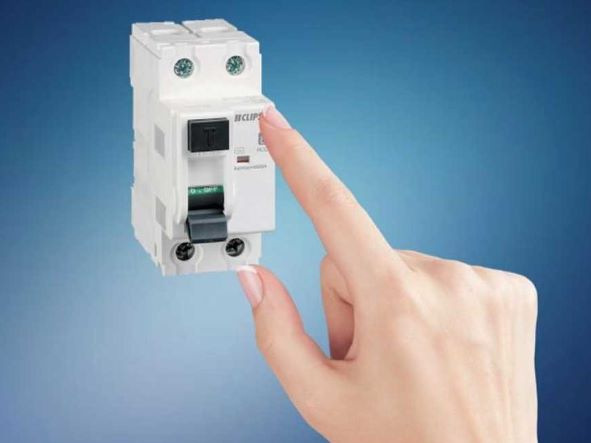 Customers are always asking “What are Safety Switches?”
Customers are always asking “What are Safety Switches?”
So here is some updated information I have put together to try answer this question…

Safety Switches, known over the years by many different names, “ELCB’s”, “RCBO’s”, “RCD’s”, ‘MCB/RCD’s” so many acronyms, it’s no wonder people get confused! For the sake of simplicity let’s stick with the term Safety Switches.
Along with mains connected photoelectric smoke alarms, Safety Switches are one of the most important safety devices in any domestic electrical installation in Sydney. Here’s why…
Firstly,
Lets start with the difference between a Circuit Breaker and a Safety Switch. Circuit breakers protect cable from over heating by limiting the current to a specified quantity. The problem is they don’t protect people from being electrocuted. Circuit breakers will deliver current directly through a person to earth and won’t know the difference.
A Safety Switch is sensitive to current being diverted to earth and will cut off within a fraction of a second. That’s the difference and in many situations they protect people from getting electrocuted. So Safety Switches help with electrical safety in the home primarily because they limit fault current to earth. Meaning over a specified threshold they instantaneously cut the power off when a fault path to earth is present. (In Australia residential homes, fault current is limited to a maximum of 30 milliamps) Therefore if an electrical fault current get diverted from its correct path and starts traveling through a human body to earth instead of back through the neutral conductor to the switchboard, the device should cut off the electricity before the fault current reaches 30mA’s. A potential life saver! If the electrical installation is working correctly.
Secondly,
Many of the home fires in Sydney start from electrical wiring and appliance faults. Safety Switches together with hard wired photoelectric smoke detectors, make a significant improvement in a home’s electrical safety. Correctly fitted Safety Switches installed following all the mandatory tests required in AS3017:2007 performed on the home wiring, such as insulation resistance, earth fault loop impedance, correct circuit connections, visual checks of conductors for CCC, mechanical protection and deterioration, earth system integrity, main earth resistance, Safety Switch function tests to name a few.
Done correctly, Safety Switches should trip and cut off the power within a fraction of a second if an electrical fault is detected, preventing all the associated risks such as electric shock, death and fire.
A word of caution..
If you see a Safety Switch on the switchboard this doesn’t necessarily mean you are completely protected. One or even two, three or four may not be enough to protect your entire household from electric shock or fire. A safety switch only protects you if it’s on the circuit where an electrical fault situation exists. All circuit should have its own safety switch, for example, individual safety switches for your light circuits and separate ones for your electrical appliances. Did you know, older houses and apartments may have no Safety Switches at all! Some only have one protecting several circuits but not all leaving some circuits completely unprotected.
To be honest if you want your home to be protected to the latest standard, any dwelling built prior to the 2018 changes to AS3000 wiring rules, bought into a requirement 2019.
Don’t forget to test!
It’s important to test the functionality of the existing safety switches (or lack of) in your home. Testing of Safety Switches on your electrical switchboards or sometimes built into power points and power boards must be done regularly.
Correct installation and regular testing is the only way to ensure long-term protection for you, your family and all of the labourers and tradesmen that visit your property like insulation installers, plumbers, electricians, pest control workers, carpenters and don’t forget the Broadband, TV & Network cable guy’s from serious injury and death. The good news is correctly installed Safety Switches can prevent many potential tragedies but remember always turn the power off prior to any risk to safety around electricity.

Electrical accidents can occur in an instant and Safety Switches (now required on all domestic circuits 32A & under as per AS3000:2018) help cut the power off fast in *most situations, helping to protect you and your family from these dangers. *More on this at the end…
Issues found during retrofitting of Safety Switches
Many factors go into determining the successful retrofitting of SS’s. When fitting circuits with protection, consideration to circuit design and equipment loading such as the number of computers, fluorescent lamps with ballasts or reactive load switching installed must be considered. Existing installations may contain issues such as intermixed conductors meaning that some field wiring work may be required to rectify faults that should have been picked up in the initial installation compliance testing.
Circuit cabling needs to pass compliance testing and any rectification, due to any non-compliant wiring will be needed prior to being energised. Some tripping issues may also arise due to unforeseeable non-sustained residual current faults. These may occur after a surge caused by for example lightning, reactive load switching or high frequency current and may not be caused by insulation breakdown. Many factors might determine a fault condition in which anything from insects or bugs inside an outlet, a water leak tracking down the inside of a conduit sheath onto an electrical junction during a rain event to a high resistance joint hidden somewhere in a wall or ceiling, also another common problem is UV damage to insulation and there many other possible situations! All such issues require the knowledge and experience of a licensed electrician to detect and rectify.
So remember many older homes and even homes built before 2019 in Sydney, that have not had the proper maintenance may have no SS protection on ovens, electric hot water systems, cook-tops, lighting circuits, or even a mixture of protected and unprotected power circuits! Even no Safety Switch protection at all! Seriously if you’re unsure, it’s a good idea to have your homes wiring checked by a licensed electrician for peace of mind.
* Note: Dangerous situations are still possible even with Safety Switches correctly installed in your home, for example an active neutral fault to exposed skin that is otherwise insulated from a path to earth or a faulty safety switch (it does happen, I have found quite a few over the years) also voltages imported into the installation earthing system through the neutral supply therefore the use of these devises is very helpful in many situation but is not perfect this means full care must always be exercised around electricity. So, always switch off the electricity from the supply when doing basic DIY maintenance on your electrical system like changing light globes or maintaining your Smoke Alarm.
In conclusion and a word on unlicensed workers or DIY
Never allow unlicensed people to work on your electrical system. It is illegal in NSW to perform electrical work if you are unlicensed, electrical work can may seem simple at times, but electrical work does have many complex implications and rules that need to be considered and adhered to and failure to do so may end in tragedy. DIY electrical work may be fatal. This is one time you really should call in the professionals.
More information can be found from the NSW Government’s website, recently updated on the 31 May 2021 Safety Switches Protect You I encourage you to follow the link, it is a great resource to help you understand even more about safety switches.
Note: Electrical installation rules are continuously improved to ensure safety. This is why Type AC RCDs are banned from 30 April 2023. This change is due to the increased use of electronics, solar energy generation and other similar products with a high direct current (DC) waveform component. Only Type A, Type B or Type F RCDs may be installed from 1 May 2023.

More on Terminology and Jargon
If you’re curious to know what all of those acronyms stand for well here you are.. Known over the years by many different names, Safety Switches, ELCB’s (Earth Leakage Circuit Breakers), RCBO’s (Residual Current Breakers with Over-Current), MCB/RCD’s (Miniature Circuit Breaker/Residual Current Devices), RCD’s (Residual Current Devices). But wait there’s more! Let’s also look at a few colloquial names thrown about by customers too, such as Trip Switches, Kill Switches, Circuit Breakers & Safety Devices… It’s no wonder peoples eyes glaze over when electricians start talking! There should be one universal name for the sake of simplicity and to avoid confusion so let’s just stick to Safety Switches. But I know there’s never going to be 100% consensus on this one. lol
